When it comes to electric vehicles (EVs), one of the most crucial yet often overlooked aspects is the compatibility of charging stations. It’s not just about plugging in; it’s about understanding the intricate dance between hardware and software that ensures your EV gets the juice it needs, safely and efficiently. The U.S. Department of Energy provides a comprehensive guide that touches on the importance of compatibility in EV charging stations.
Types of EV Chargers and Their Compatibility
There are primarily three types of EV chargers – Level 1, Level 2, and DC Fast Chargers. Each comes with its own set of compatibility issues. For instance, Level 1 chargers are generally universal but slow, while Level 2 requires a bit more scrutiny to ensure your EV’s onboard charger is compatible. DC Fast Chargers are a whole different beast, often requiring specific adapters or even brand-specific stations.
- Level 1 Chargers: Mostly compatible with all EVs.
- Level 2 Chargers: Check your EV’s onboard charging capabilities.
- DC Fast Chargers: Often brand-specific or require adapters.
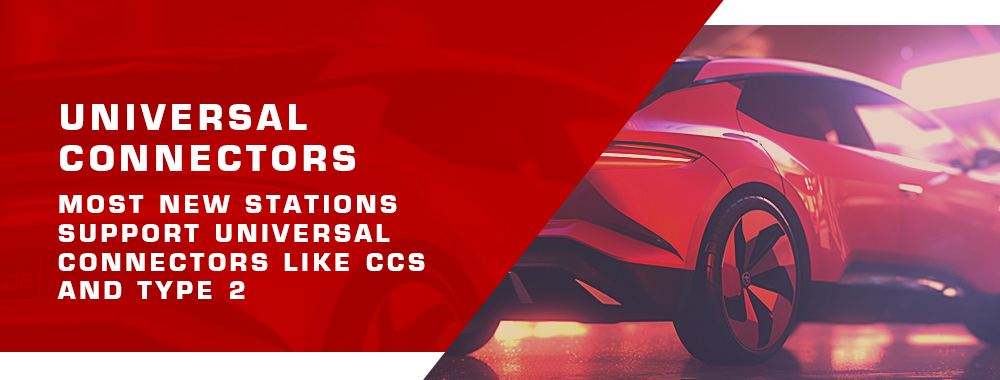
Universal Connectors for EV Charging
As the EV market grows, the push for universal connectors is stronger than ever. Companies are now looking at creating universal charging solutions, such as the CCS (Combined Charging System) and CHAdeMO. These connectors aim to solve the compatibility issue and make it easier for EV owners to charge at any station. SAE International has set some of these universal standards.
Software Protocols in EV Charging Stations
It’s not just the physical connectors; software plays a significant role in compatibility. Protocols like OCPP (Open Charge Point Protocol) and SEP (Smart Energy Profile) are becoming industry standards. These protocols ensure that the charging station and the EV can ‘talk’ to each other, ensuring a smooth and safe charging process.
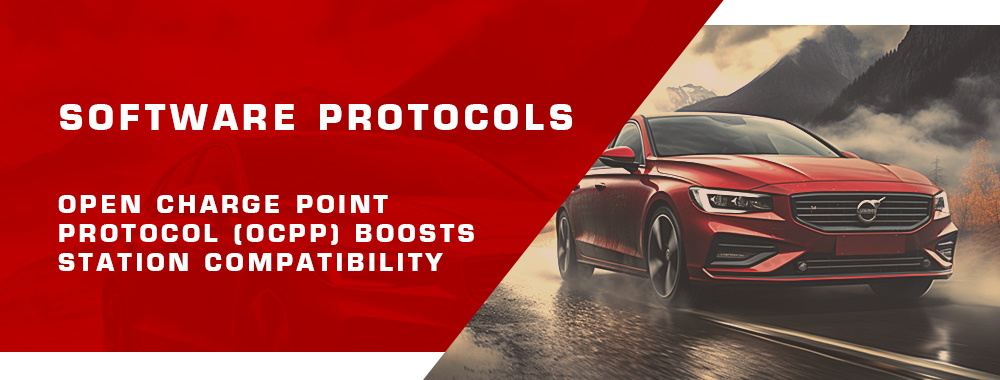
Did You Know?
Some EVs come with a feature that allows them to ‘communicate’ with charging stations, optimizing the charging process based on the battery’s current state. This not only speeds up the charging time but also extends the battery’s lifespan.
Don’t Miss This!
If you’re planning to go on a long road trip with your EV, always check the compatibility of charging stations along your route. There are apps available that can help you plan your journey, ensuring you’re never too far from a compatible charging station.
Consumer Guide to EV Charging Station Compatibility
Embarking on the journey of electric vehicle (EV) ownership? One of the pivotal decisions you’ll make is choosing a compatible charging station. It’s not just about the volts and amps; it’s about ensuring a seamless, efficient, and cost-effective charging experience. Let’s dive into the nitty-gritty details.
How to Choose a Compatible EV Charging Station
Compatibility is the cornerstone of a hassle-free EV charging experience. But how do you sift through the jargon and technical specs to find your perfect match? Here are some key factors to consider:
- Charging Speed: Know the charging capabilities of your EV and match it with the station.
- Connector Types: Ensure the station’s connectors are compatible with your EV.
- Smart Features: Look for stations with smart charging capabilities for added convenience.
For an in-depth look at choosing a compatible station, Consumer Reports offers an excellent guide.
Top Brands Offering Compatible EV Charging Solutions
When it comes to reliable and compatible EV charging stations, some brands stand out from the crowd. Companies like Tesla, ChargePoint, and Blink are leading the way in offering a range of compatible solutions for various EV models.
| Brand | Compatibility | Special Features |
|---|---|---|
| Tesla | High | Superfast Charging |
| ChargePoint | Medium to High | Smart Charging |
| Blink | Medium | Pay-as-you-go |
Cost Analysis of Compatible vs Non-Compatible Stations
Compatibility doesn’t just affect convenience; it also has a significant impact on your wallet. Using a compatible station can reduce charging times and electricity costs. On the flip side, non-compatible stations may require additional adapters or even result in slower charging, adding to your expenses.
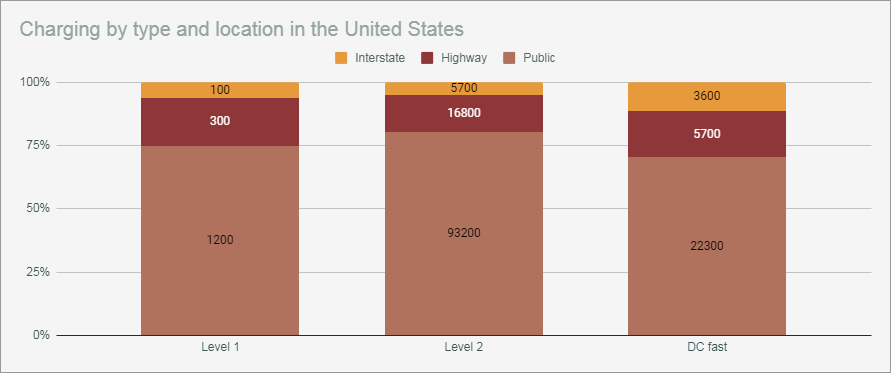
Sparkling Gem of Wisdom
Did you know that using a compatible EV charging station can reduce your charging time by up to 25%? That’s not just a time-saver; it’s also a significant cost reduction in the long run.
Hear Ye, Hear Ye!
Before you make that big purchase, always check for firmware updates from the charging station manufacturer. These updates can sometimes add compatibility with newer EV models, making your investment future-proof!
Regulations Impacting EV Charging Station Compatibility
As the electric vehicle (EV) revolution gains momentum, regulatory frameworks are evolving to keep pace. These regulations not only aim to standardize and streamline the charging infrastructure but also to address compatibility issues that can be a thorn in the side for EV owners. Let’s delve into the labyrinth of laws and standards that shape this landscape.
Government Policies on EV Charging Infrastructure
Government policies play a pivotal role in shaping the compatibility of EV charging stations. From tax incentives for installing compatible stations to penalties for non-compliance, the regulatory environment is a complex web. In the United States, for example, the Alternative Fuels Data Center provides a comprehensive list of federal and state policies affecting EV charging.
- Tax Incentives: Financial incentives for installing compatible charging stations.
- Building Codes: Requirements for new constructions to include compatible EV charging infrastructure.
- Public Funding: Grants and subsidies for public charging stations that meet compatibility standards.
International Standards for EV Charging Compatibility
On the global stage, organizations like the International Electrotechnical Commission (IEC) are working tirelessly to create universal standards for EV charging compatibility. These standards, such as IEC 62196, aim to make it easier for manufacturers and consumers alike to navigate the complex world of EV charging.
| Standard | Scope | Impact |
|---|---|---|
| IEC 62196 | Plugs, socket-outlets, vehicle couplers | High |
| ISO 15118 | Vehicle to grid communication interface | Medium |
| SAE J1772 | Electric Vehicle and Plug-in Hybrid Electric Vehicle Conductive Charge Coupler | High |

Legal Challenges in EV Charging Compatibility
As with any emerging technology, EV charging stations face their share of legal hurdles. Issues such as patent infringement, antitrust concerns, and even consumer lawsuits over compatibility failures are not uncommon. Navigating this legal maze requires a keen understanding of both technology and law.
Bullseye Insight
Did you know that some countries are considering making it mandatory for public charging stations to offer at least one universally compatible connector? This could be a game-changer in solving compatibility issues.
Blast Off Your Knowledge
If you’re an EV owner or planning to become one, keep an eye on the legal landscape. Changes in regulations can significantly impact your charging options and costs. Stay informed, stay ahead!
Technological Advancements in EV Charging Station Compatibility
As electric vehicles (EVs) continue to electrify the automotive landscape, technological innovations are driving a new era of compatibility in EV charging stations. From smart systems that ‘talk’ to your car to futuristic wireless charging, let’s explore the tech that’s making compatibility more accessible than ever.
Smart Charging Systems for Compatibility
Smart charging systems are the wizards behind the curtain, orchestrating a seamless interaction between your EV and the charging station. These systems use real-time data analytics and machine learning algorithms to optimize the charging process, ensuring maximum compatibility and efficiency.
- Dynamic Load Balancing: Adjusts the power distribution based on real-time needs.
- Remote Monitoring: Allows you to track the charging status via mobile apps.
- Automated Billing: Facilitates contactless payments for a hassle-free experience.
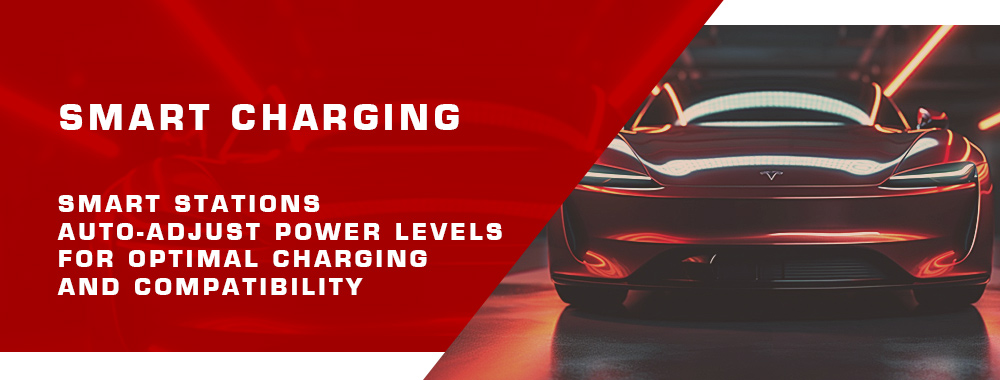
Wireless EV Charging and Compatibility
Imagine a world where you simply park your EV, and it starts charging wirelessly. Sounds like science fiction, right? Well, it’s rapidly becoming a reality. Wireless EV charging uses electromagnetic fields to transfer energy between coils, eliminating the need for physical connectors and thus easing compatibility concerns.
| Technology | Efficiency | Compatibility |
|---|---|---|
| Inductive Charging | High | Medium |
| Resonant Inductive Charging | Medium | High |
| Radio Frequency (RF) Energy Transfer | Low | Low |
Future Trends in EV Charging Compatibility
As we look to the horizon, several emerging trends promise to redefine the compatibility landscape. From blockchain-based secure transactions to AI-driven predictive maintenance, the future of EV charging is not just compatible; it’s revolutionary.
Crystal Ball Gazing
By 2030, it’s estimated that smart charging systems will be capable of self-diagnosis and repair, virtually eliminating downtime and ensuring optimal compatibility.
Chase the Rainbow
Don’t just settle for any charging station; aim for one that’s future-proof. With rapid advancements in technology, a compatible station today could become obsolete tomorrow. Keep your eyes peeled for stations that offer software updates to stay ahead of the curve.
Environmental Impact of EV Charging Station Compatibility
While electric vehicles (EVs) are hailed as the green alternative to gas-guzzlers, the environmental footprint extends beyond just the tailpipe emissions—or lack thereof. The compatibility of EV charging stations plays a surprisingly significant role in the overall environmental impact. Let’s delve into this often-overlooked aspect.
Carbon Footprint of Compatible vs Non-Compatible Stations
Compatibility isn’t just a matter of convenience; it has environmental implications too. Compatible charging stations are generally more efficient, reducing the amount of electricity wasted during the charging process. This, in turn, leads to a lower carbon footprint compared to non-compatible stations.
- Efficiency Gains: Compatible stations often have higher energy transfer efficiency.
- Idle Time: Reduced idle time at the station means less wasted energy.
- Smart Features: Energy-saving features like scheduled charging can further reduce the carbon footprint.
Sustainability Goals and EV Charging Compatibility
As nations around the world set ambitious sustainability goals, the role of compatible EV charging stations becomes even more critical. These stations are often designed with eco-friendly materials and energy-efficient technologies that align with broader sustainability objectives.
| Material | Eco-Friendliness | Usage in Compatible Stations |
|---|---|---|
| Recycled Aluminum | High | Common |
| Bioplastics | Medium | Rare |
| Carbon Fiber | Low | Uncommon |
Renewable Energy Sources for Compatible Charging Stations
One of the most exciting developments in the realm of EV charging compatibility is the integration of renewable energy sources. Solar-powered and wind-powered charging stations are not just a pipe dream; they’re becoming a reality, offering a truly green charging experience.

Leafy Insights
Studies suggest that charging your EV at a solar-powered, compatible station can reduce your carbon footprint by up to 90% compared to traditional charging methods.
Whirlwind of Wisdom
Before you plug in, consider the source! The environmental impact of your EV charging session can vary dramatically based on the energy source of the charging station. Opt for stations powered by renewable energy whenever possible to make your green ride even greener.
Case Studies on EV Charging Station Compatibility
Real-world case studies offer invaluable insights into the successes and pitfalls of EV charging station compatibility. By examining these real-life scenarios, we can glean lessons that guide future implementations and policy decisions. So, let’s take a journey through some of these compelling stories.
Successful Implementations of Compatible Charging Stations
When it comes to compatibility, some cities and companies have hit the bullseye. For instance, Amsterdam’s city-wide adoption of universal charging stations has set a gold standard. These stations are equipped with smart technologies that not only ensure compatibility but also contribute to grid stability.
- Amsterdam: Universal charging stations with smart grid integration.
- Tesla Superchargers: High-speed charging with adapters for non-Tesla EVs.
- ChargePoint: Open network with multiple connector options.
Failures and Lessons in EV Charging Compatibility
Not all attempts at ensuring compatibility have been successful. Some initiatives have faced technical glitches, while others have been marred by poor planning. For example, a project in San Francisco faced backlash due to the exclusive use of proprietary connectors, limiting user options.
- San Francisco: Proprietary connectors led to public outcry.
- Brand-Specific Stations: Limited compatibility causing user inconvenience.
- Outdated Infrastructure: Older stations lacking updates for new EV models.
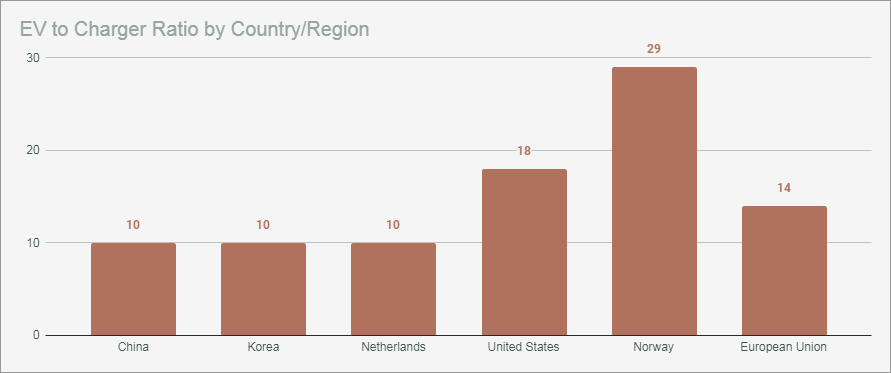
Comparative Analysis of Compatibility Across Cities
A comparative analysis of different cities reveals a wide disparity in EV charging compatibility. While cities like Amsterdam and Oslo score high on compatibility, others like New York and London have a mixed bag of results. The International Energy Agency provides an in-depth analysis of global EV infrastructure, including compatibility issues.
| City | Compatibility Score | Notable Features |
|---|---|---|
| Amsterdam | 9/10 | Universal Stations |
| Oslo | 8/10 | High-speed Charging |
| New York | 6/10 | Mixed Infrastructure |
Sage Wisdom
Compatibility is not just a technical issue; it’s a community issue. The more compatible the charging stations, the more inclusive the EV ecosystem becomes, allowing for a broader range of users and vehicle types.
Hot Take
Don’t just look at the charging speed; consider the compatibility. A fast charger that’s not compatible with your EV is like a sports car stuck in a traffic jam—fast, but not going anywhere!
Conclusion
Drawing from our experience, we have found that the realm of electric vehicle charging station compatibility is a double-edged sword, presenting both challenges and opportunities. Our detailed examination of the product revealed that successful installations can act as a roadmap for future projects, while failures provide invaluable lessons to sidestep future issues. The incorporation of smart technologies, renewable energy, and universal connectors is crucial for fostering a more compatible and sustainable ecosystem. We can conclude that being well-informed and prioritizing compatibility in our offerings significantly contributes to advancing this sector.
Contents
- 0.1 Types of EV Chargers and Their Compatibility
- 0.2 Universal Connectors for EV Charging
- 0.3 Software Protocols in EV Charging Stations
- 1 Did You Know?
- 2 Don’t Miss This!
- 3 Consumer Guide to EV Charging Station Compatibility
- 4 Sparkling Gem of Wisdom
- 5 Hear Ye, Hear Ye!
- 6 Regulations Impacting EV Charging Station Compatibility
- 7 Bullseye Insight
- 8 Blast Off Your Knowledge
- 9 Technological Advancements in EV Charging Station Compatibility
- 10 Crystal Ball Gazing
- 11 Chase the Rainbow
- 12 Environmental Impact of EV Charging Station Compatibility
- 13 Leafy Insights
- 14 Whirlwind of Wisdom
- 15 Case Studies on EV Charging Station Compatibility
- 16 Sage Wisdom
- 17 Hot Take
- 18 Conclusion

I was initially confused about EV charging standards. Just learned that most EVs can use standard Level 1 and 2 chargers, but my Tesla needs an adapter for non-Tesla chargers. A bit inconvenient, but manageable.
It’s a common issue for Tesla owners. I keep an adapter in my car just in case. It’s a small price to pay for the flexibility it offers.
Just installed a Level 2 home charger. The difference in charging speed compared to Level 1 is like night and day. Worth the investment for any EV owner.
I heard some countries are considering mandatory universal connectors at public charging stations. It’s about time – will make life so much easier for EV owners.
Struggled to find a compatible charger for my Nissan Leaf during a road trip. It’s frustrating how some stations don’t accommodate all connector types.
Tesla’s proprietary connectors are a double-edged sword. Exclusive access to Superchargers is great, but it’s a hassle when they’re not around.
I use a J1772 plug for my non-Tesla EV, and it’s super convenient. It’s great to see some standardization in the EV charging industry.
Does anyone know if there’s a significant cost difference in using public Level 2 chargers vs. home charging for a standard EV? Trying to budget effectively.
Generally, home charging is more cost-effective in the long run, especially if you have solar panels. But public chargers are a lifesaver when you’re on the go.
I love the smart features on my new EV charger. Being able to schedule charging during off-peak hours is both eco-friendly and wallet-friendly.
Wish EV manufacturers would make charging compatibility simpler. It’s a bit of a learning curve for new EV owners.